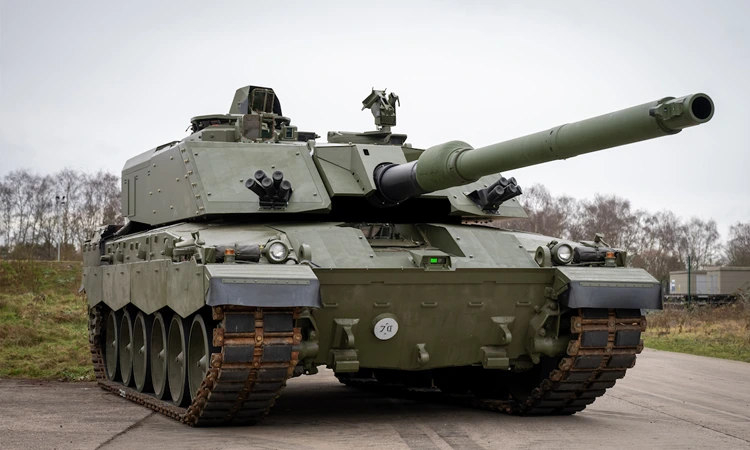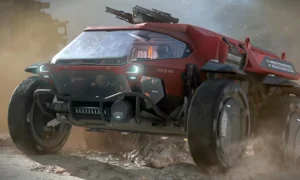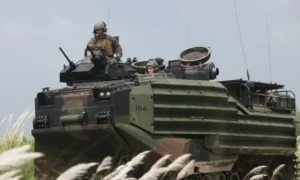Amidst the evolving nature of warfare, few machines embody power and strategy as well as the modern battle tank. No longer simply considered heavy armored beasts, today’s military tanks are far more than rolling fortresses — they are smart, fast, and adaptable. As combat spreads from traditional fields to complex urban terrain and high-tech battle lines, the tank has evolved to meet the new challenges.
Due to advancements in firepower, accuracy in targeting, and defensive systems, tanks are no longer just supporting tools, they are at the core of military dominance. Here we take a close look at three of the most formidable main battle tanks in the world today: South Korea’s K2 Black Panther, the United States’ M1 Abrams and Germany’s Leopard 2A7. Each boasts its own blend of power, technology and combat record.
Why Tanks Remain Relevant Today
It is tempting to think that tanks are a thing of the past in an era of drones and cyberwar But on the battlefield they continue to shape the terms of combat.Modern tanks are no longer a matter of brute force, they are a formidable combination of armor and firepower and tactical versatility.
Regardless of whether they’re sweeping across desert terrain or defending tight urban warfare zones’ streets, tanks deliver what few systems can: mobile protection and overwhelming response. Their heavy armor can withstand direct hits, and onboard AI-driven targeting systems and active protection systems (APS) deflect threats before they can impact. Some newer models can even identify enemy positions independently and send real-time data across entire units.
From front-line attack to rear-guard defense, tanks remain essential — not since they’re invulnerable, but because they can adapt, survive, and thrive when coupled with the digital battlefield awareness of today.
Top Military Tanks in the World
1. K2 Black Panther (South Korea): The High-Tech Predator
Let’s start with the newcomer that’s shaking up the global scene. South Korea’s K2 Black Panther isn’t just another tank — it’s an engineering statement. Built with a forward-thinking mindset, the K2 combines automation, firepower, and speed in ways that redefine how a modern tank should fight.
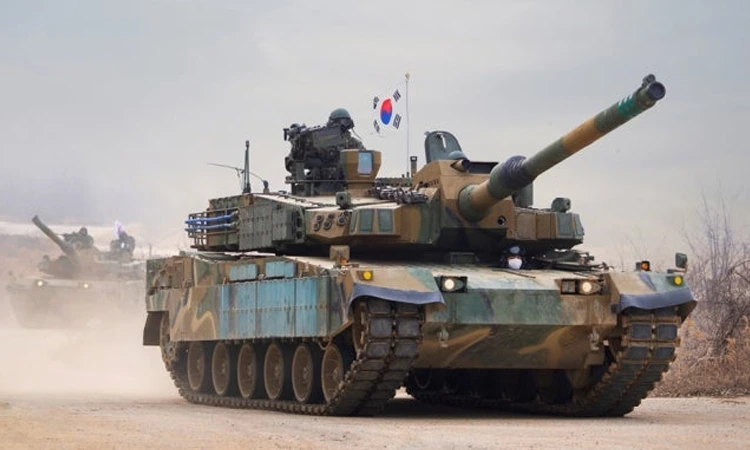
Why it’s a game-changer
First, the K2 doesn’t rely on brute force alone. It comes with an automatic target tracking system, allowing it to lock and fire on moving targets — even while moving itself. That’s not a luxury, it’s a battlefield advantage.
It also uses a hydropneumatic suspension system, letting the tank “lean” in different directions. Want to lower the front and peek over a hill while staying hidden? Done. Need to adjust for uneven terrain or urban combat? The K2 can adapt on the fly.
Key Specs:
- 120mm L/55 smoothbore gun (autoloading)
- Modular composite armor + Explosive Reactive Armor (ERA)
- Active Protection System (APS) with radar tracking
- Max speed: ~70 km/h
- Crew: 3
Reality check: The K2’s only drawback? Price. At over $8.5 million per unit, it’s one of the most expensive tanks in the world. But countries looking for an elite edge — like Poland, Norway, and Egypt — are already buying in.
2. M1 Abrams (USA): The Battlefield Icon Reimagined
If you’ve ever watched war footage or played a military video game, you’ve probably seen the M1 Abrams. It’s been the backbone of the U.S. Army since the 1980s, but don’t be fooled — this tank has evolved.
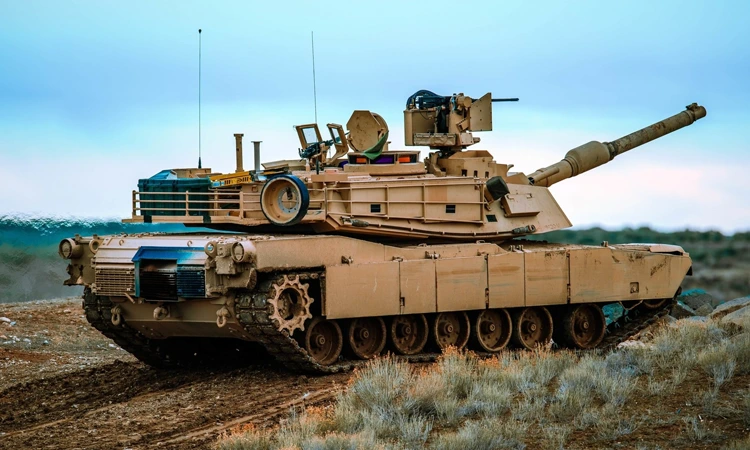
Still relevant in 2025? Absolutely.
The latest version the M1A2 SEP v3 is a beast. With upgraded armor, battlefield networking and nextgen thermal imaging, it is designed for 21st century warfare. It can track targets from miles away, communicate in real time with air and ground units, and deliver devastating firepower, all while protecting its crew with advanced reactive armor and blast deflection systems.
Key Specs:
- 120mm M256 smoothbore gun
- Depleted uranium armor (yes, really)
- Improved powertrain and fuel efficiency
- Trophy Active Protection System (APS)
- Weight: 73+ tons
Fun fact: Despite its weight, the Abrams can still hit 67 km/h on road and cross desert terrain with ease. It’s not the nimblest tank on the list, but it doesn’t need to be. This one’s about firepower, protection, and staying power.
3. Leopard 2A7 (Germany): Precision Meets Power
Now let’s talk about the Leopard 2A7 — a tank that proves engineering finesse can coexist with raw power. Germany’s long-standing reputation for precision manufacturing is alive and well in this modern war machine.
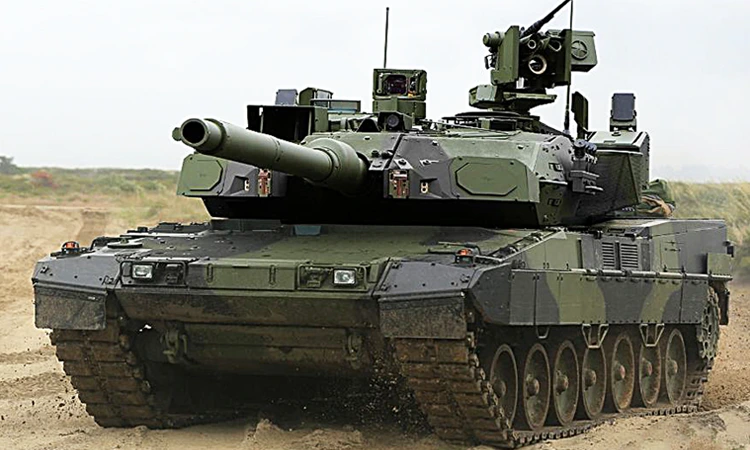
What sets it apart?
Where other tanks prioritize mobility or firepower over everything, the Leopard 2A7 finds a virtually perfect balance. It’s adaptable, in the sense that it can perform urban warfare as well as open-field combat equally well. It features climate control systems in extreme weather conditions, reduced acoustic signatures, and improved modular armor which can be repaired or upgraded in the heat of battle on the fly.
Key Specs:
- 120mm Rheinmetall L/55 smoothbore gun
- Advanced optics & laser rangefinding
- Modular armor system with mine protection
- Max speed: ~72 km/h
- Effective range: ~450 km
Why armies love it: NATO forces and several European allies have adopted or upgraded to the Leopard 2A7. It’s a reliable, modern platform with impressive survivability — and unlike many next-gen tanks, it’s already been deployed and battle-tested.
Side-by-Side Comparison Table
Here’s a breakdown of how the K2 Black Panther, M1 Abrams, and Leopard 2A7 compare when it comes to specs, performance, and unique technologies. This overview helps you see at a glance what each tank brings to the battlefield:
| Tank | Origin | Main Gun | Armor | Weight | Top Speed | Notable Feature |
|---|---|---|---|---|---|---|
| K2 Black Panther | South Korea | 120mm Smoothbore | Composite + ERA | ~55 tons | 70 km/h | Adaptive suspension, AI targeting |
| M1 Abrams | USA | 120mm Smoothbore | Chobham Composite | ~62 tons | 67 km/h | Gas turbine engine, battle-tested reliability |
| Leopard 2A7 | Germany | 120mm Smoothbore | Modular Composite | ~64 tons | 68 km/h | High mobility, advanced crew protection |
Which One Paces the Battlefield?
All these tanks are forces to be reckoned with, but when all is said and done, how do they measure up where it truly matters — on the battlefield?
The K2 Black Panther is typically the most technologically advanced. Its smart suspension adjusts automatically in real time according to ground conditions, and its artificial intelligence-powered fire control allows the tank to identify and shoot targets independently. For quick-fire, unprovoked war, the K2 provides unmatched agility and innovation.
The M1 Abrams, however, has one advantage that the others do not: decades of battle-tested reliability. From the Gulf War through deployments today, its firepower endurance and sheer survivability are what most militaries continue to value most. Its gas turbine powerpack gives it a speed and responsiveness advantage — but at the cost of fuel efficiency.
The Leopard 2A7 brings brawn and brains together. With its superior balance between protection, mobility, and fire accuracy, it is a favorite among NATO training exercises. The German work ethic is also seen through its modular armor technology and advanced crew protection features.
So, whose tank reigns supreme?
There isn’t one, it depends on the mission. If mobility and state-of-the-art technology is at the top of the list, the K2 takes it. If battlefield resilience in the field and legacy count, the M1 remains king. For an all-around, tactical edge at multinational operations, most will bet on the Leopard 2A7.
Final Verdict: Which Tank Reigns Supreme?
It depends on what you value most:
- Tech & agility? Go with the K2 Black Panther. It’s unmatched in automation and terrain control.
- Raw power and legacy? The M1 Abrams still dominates with upgrades that keep it future-proof.
- Balanced precision? The Leopard 2A7 is your pick for all-around excellence and proven performance.
Each of these tanks brings something unique to the battlefield. And with military tech accelerating faster than ever, we’re likely to see even more innovation packed into the next generation of these steel giants.
Frequently Asked Questions
1. What is the world’s number one tank in the modern world?
There’s always debate among those who are in the know, but the majority place the number one on the list with the K2 Black Panther, South Korean-produced tank. It combines level-leading targeting technology, armor that responds to incoming fire, and mobility that even other flagship tanks can’t hope to match. The M1 Abrams and Leopard 2A7 remain top-notch players, but the K2 raises the bar on what a 21st-century tank can be.
2. Which is the oldest serving tank?
To everyone’s surprise, the T-55 Soviet-era tank, which was first manufactured in the late 1950s, continues to fight in some corners of the world. Though far behind in cutting-edge technology, some countries hold onto these tanks for frontier defense or reserve forces. Their low tech and cheap nature make them perfect for low-level operations.
3. Why are new tanks such as the M1 Abrams and Leopard 2A7 still relevant today?
New tanks are no longer simply a matter of armor and guns. Both the Leopard 2A7 and M1 Abrams have been fitted with digital fire control systems, network connectivity in the battlefield, and better defense against drones and missiles. Their capacity for adaptation keeps them useful in today’s rapidly evolving battlefields.
4. Can a private collector buy an actual tank?
Yes, if it’s been deactivated. Some tanks, once retired from battle and their cannon removed, can be sold to collectors, museums, or even enthusiasts legally. Websites like Miltrade, a well-established global military marketplace, allow people to search listings of retired tanks and armored vehicles — some in very good shape. Just make sure that you check local laws prior to buying.
5. Are tanks relevant anymore with all the new drone war tech?
Yes. Tanks remain at the heart of ground warfare. What has changed is their deployment — now with more coordination with drones and air assets. Tanks provide safe firepower, force projection, and psychological pressure on the battlefield, especially in wars where control of turf matters.
